Mold can be a persistent and harmful problem in any home, posing health risks and damaging surfaces. When faced with mold, many homeowners wonder: Can hydrogen peroxide kill mold effectively? The short answer is yes, hydrogen peroxide can kill mold on certain surfaces and is a readily available, affordable option for mold removal.
However, its effectiveness depends heavily on the type of surface and the extent of the mold growth. While hydrogen peroxide is a powerful oxidant that breaks down mold cells, it’s not a one-size-fits-all solution, especially for porous materials or deeply embedded mold.
This guide will explore how to use hydrogen peroxide to kill mold safely and effectively, its limitations, and when to consider alternative solutions or professional help. Get ready to understand the truth about using hydrogen peroxide for mold removal.
Key Takeaways:
- Hydrogen peroxide effectively kills surface mold on non-porous materials but struggles with deep mold in porous surfaces and does not eliminate harmful mycotoxins.
- Always prioritize safety and proper technique when using hydrogen peroxide, including wearing gloves, ensuring ventilation, avoiding mixing with other cleaners, and allowing adequate dwelling time.
- For extensive mold, porous materials, or suspected toxic varieties, professional help is crucial. Natural alternatives like vinegar or tea tree oil offer safer DIY options for smaller issues.
Does Hydrogen Peroxide Kill Mold?
💡 Quick Answer: Yes, hydrogen peroxide can kill mold by breaking down its cellular structure due to its oxidizing properties. It is most effective on hard, non-porous surfaces but may not fully eliminate deep-seated mold in porous materials or kill mycotoxins.
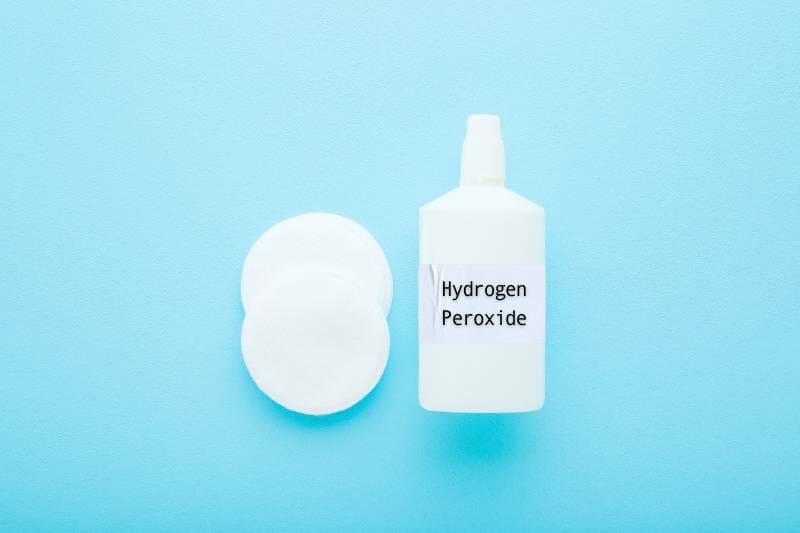
On a chemical level, hydrogen peroxide releases oxygen when it comes into contact with mold, which is how it acts as an effective disinfectant. This reaction helps to break down the mold’s structure, making it easier to wipe away.
While hydrogen peroxide is effective at removing mold from hard surfaces like countertops or bathroom tiles, it doesn’t always kill surface mold completely on porous materials.
The problem lies in materials like wood or fabric, where mold can burrow deep. In these cases, hydrogen peroxide might not reach all the way through to kill the entire fungus.
Even worse, it doesn’t kill mycotoxins—the harmful substances mold produces that can cause serious health problems.
Experts and studies back this up, pointing out that hydrogen peroxide can be a temporary fix but not a complete solution. So, while it might make the mold disappear, it doesn’t always eliminate the root of the problem.
Think of it as putting a band-aid on a bigger issue—it might help for now, but the mold could come back if you’re not careful. This is why understanding the nuances of how hydrogen peroxide kills mold is crucial.
Where Can You Use and Not Use Hydrogen Peroxide to Kill Mold?
💡 Quick Answer: Hydrogen peroxide is highly effective for killing mold on non-porous surfaces like glass, tiles, and countertops. It is generally not recommended for porous materials such as wood, drywall, or fabrics, as it may not penetrate deeply enough and can cause discoloration.
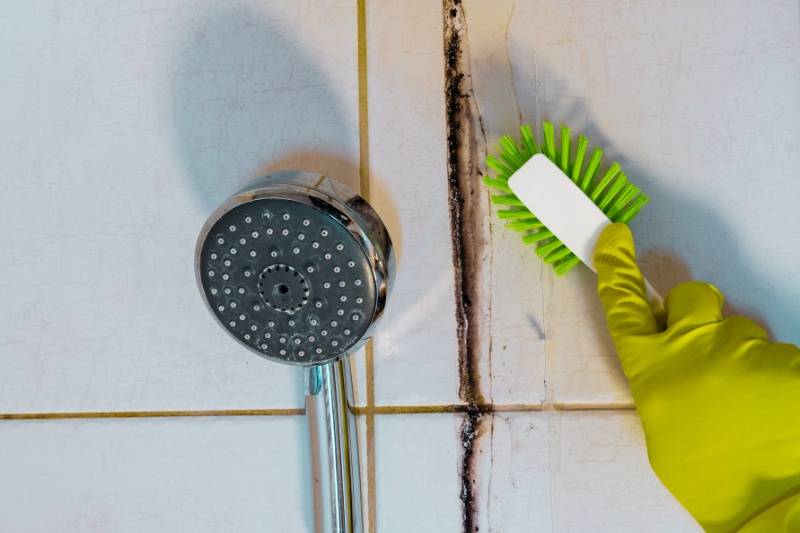
Hydrogen peroxide is a handy tool for killing mold on non-porous surfaces like glass, tiles, and countertops. These materials allow the hydrogen peroxide to work its magic, breaking down mold on contact and making it easy to wipe away.
It is particularly effective at removing mold stains from non-porous surfaces. If you’ve got mold in your bathroom or on kitchen appliances, a quick spray of hydrogen peroxide can do the trick without leaving harmful residues or producing toxic fumes.
But when it comes to porous surfaces, like wood and fabrics, hydrogen peroxide isn’t the best choice. These materials have tiny pockets where mold can hide, making it tough for hydrogen peroxide to reach and fully kill the mold.
Not to mention, hydrogen peroxide has a bleaching effect that can discolor wood and fabrics, potentially causing more harm than good. If you’re dealing with mold on wood or fabric, consider alternative methods or professional help.
For homeowners, a good rule of thumb is to stick with hydrogen peroxide for hard, non-porous surfaces where it can be most effective. And always remember, a little prevention goes a long way—keeping areas dry and well-ventilated can help stop mold before it starts!
How to Use Hydrogen Peroxide to Kill Mold
💡 Quick Answer: To use hydrogen peroxide to kill mold, apply a 3% concentration to the moldy surface, ensure thorough coverage, let it sit for at least 10 minutes, then scrub gently with a brush or rag and wipe dry. Always wear gloves and ensure good ventilation.
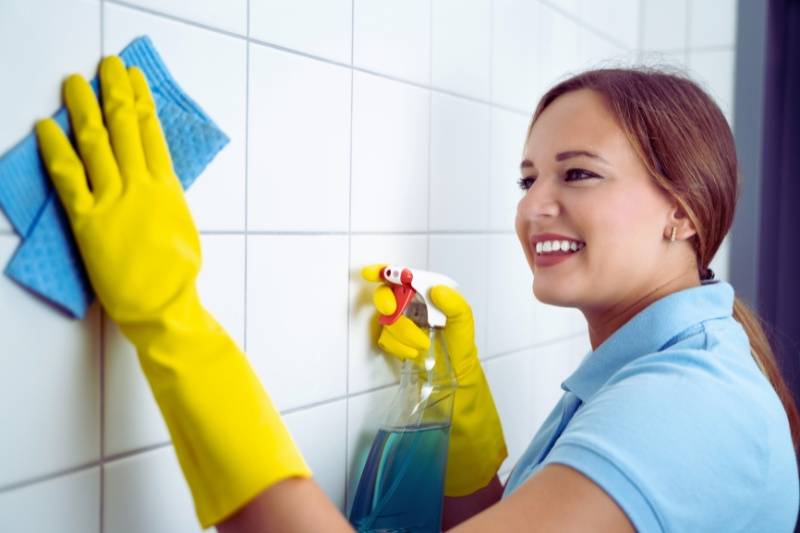
Using hydrogen peroxide to kill mold is simple and effective if done right. Follow these steps for safe and thorough mold removal:
- Prepare the solution: Start with a 3% concentration of hydrogen peroxide, which is commonly found in stores. Pour it into a spray bottle for easy application.
- Ensure safety: Before you begin, make sure to wear gloves and ventilate the area—open windows or use a fan to keep the air moving, preventing the buildup of mold spores in the air.
- Apply thoroughly: Spray the moldy surface thoroughly, ensuring you cover the entire area where the fungus is present.
- Allow dwelling time: Let the hydrogen peroxide sit for at least 10 minutes. This gives it time to break down the mold’s structure. You’ll notice it bubbling—that’s a good sign!
- Scrub gently: After waiting, gently scrub the area with a soft brush or rag. Start with light pressure and increase as needed to avoid damaging the surface.
- Wipe dry: Finally, wipe the area dry with a clean cloth to prevent any remaining moisture from encouraging mold to return.
Remember, thorough coverage and patience are key to effectively removing mold with hydrogen peroxide.
Dangers of Using Hydrogen Peroxide to Kill Mold
💡 Quick Answer: The dangers of using hydrogen peroxide for mold removal include skin irritation, surface damage (discoloration), potential release of mold spores if scrubbed too aggressively, and the risk of toxic fumes if mixed with other cleaning agents like vinegar, which creates harmful peracetic acid.
While hydrogen peroxide might seem like a convenient solution for killing mold, it comes with some risks. For starters, it can cause skin irritation, so wearing gloves is a must.
It’s also unstable in sunlight, which can make it less effective if not stored properly. Moreover, it’s known to damage certain surfaces, like natural fabrics and wood, by causing discoloration.
Even more concerning, if you scrub mold too hard while using hydrogen peroxide, you risk releasing mold spores into the air, potentially spreading the problem throughout your home and exacerbating respiratory issues.
And whatever you do, never mix hydrogen peroxide with other cleaning chemicals, especially vinegar, as it can create toxic fumes. This combination creates peracetic acid, a harmful substance that can seriously irritate your eyes, skin, and lungs.
Given these risks, you might want to reconsider using hydrogen peroxide for mold removal. There are safer, more reliable methods available that can get the job done without putting your health and home at risk. Sometimes, it’s better to leave mold remediation to the professionals.
Alternative and Natural Ways to Get Rid of Mold
💡 Quick Answer: Effective natural alternatives to hydrogen peroxide for mold removal include tea tree oil (antimicrobial), white vinegar (disrupts pH), baking soda (gentle abrasive and moisture absorber), and grapefruit seed extract (non-toxic and odorless).
If you’re looking for safer and possibly more effective ways to tackle mold, several natural alternatives to hydrogen peroxide are worth considering. These options can be particularly useful for those concerned about harsh chemicals or specific surface types.
Tea Tree Oil
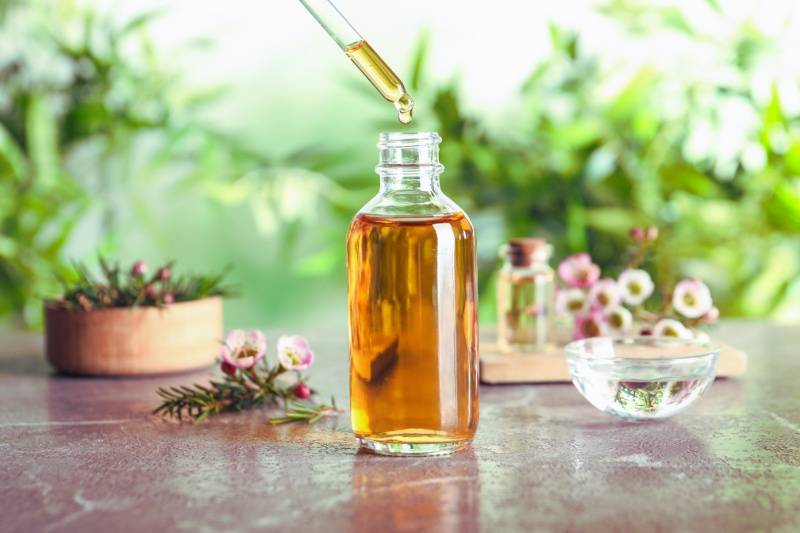
Tea tree oil is a powerful, natural alternative for mold removal, thanks to its strong antimicrobial properties. It’s especially good for those who prefer a non-toxic solution.
To use tea tree oil, mix a teaspoon of it with one cup of water in a spray bottle. Spray the moldy area thoroughly and let it sit for at least an hour before wiping it clean.
This method not only kills mold but also helps prevent it from coming back. Just be sure to keep the area well-ventilated and avoid direct contact with your skin, as tea tree oil can be potent.
Vinegar
Vinegar is another household staple that can effectively remove mold by disrupting its pH balance and is effective against 82% of mold species.
It’s simple to use: just pour undiluted white vinegar into a spray bottle and apply it directly to the moldy surface. Let it sit for about an hour before wiping the area clean.
Vinegar is especially good for non-porous surfaces like tiles and glass. Vinegar’s strong smell may be off-putting, but it’s a small price to pay for its effectiveness as a mold killer.
Baking Soda
Baking soda is a versatile and gentle mold remover. Its moisture-absorbing properties make it great for tackling mold in damp areas, and its mild abrasiveness helps scrub the mold away without damaging surfaces.
To use, mix one tablespoon of baking soda with a cup of water and spray it on the moldy spot. After letting it sit for about 10 minutes, scrub the area with a brush or sponge and rinse with water.
Baking soda also leaves a protective layer that can help prevent mold from returning, making it a dual-action solution for mold removal.
Grapefruit Seed Extract
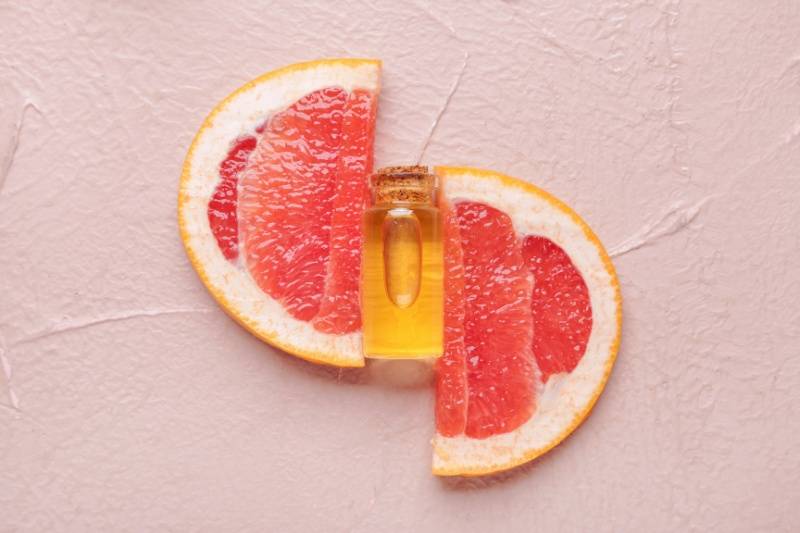
Grapefruit seed extract is another natural, non-toxic option for removing mold. It’s effective at killing mold and preventing regrowth without leaving behind harmful residues.
To use, mix 10 drops of grapefruit seed extract with one cup of water and spray the moldy area. Let it sit for 10 to 15 minutes before wiping it clean. This method is particularly appealing because it leaves no odor and is safe for most surfaces.
These natural alternatives offer a variety of ways to combat mold in your home, often with fewer risks and side effects than chemical-based solutions like hydrogen peroxide.
When Should You Seek Professional Help with Mold?
💡 Quick Answer: You should seek professional mold remediation help for extensive mold growth, suspected toxic mold varieties (black mold), mold in HVAC systems, or if you experience persistent health issues, as DIY methods may not be sufficient or safe in these situations.
While DIY methods can work for small mold issues, there are times when calling in the professionals is the smart move.
If you’re dealing with extensive mold growth (e.g., larger than 10 square feet), suspected toxic mold varieties like black mold, or mold in tricky places like your HVAC system or behind walls, it’s best to get expert help.
Professionals have the tools and knowledge for thorough mold removal, reducing health risks and ensuring it doesn’t come back.
Remember, handling large mold problems on your own can sometimes make things worse, spreading mold spores and increasing the danger. When in doubt, it’s safer to let the mold remediation experts handle it.
Preventing Mold in Your Home
💡 Quick Answer: To prevent mold in your home, it is essential to control moisture by fixing leaks promptly, using dehumidifiers in damp areas, ensuring proper ventilation with exhaust fans, regularly checking for condensation, and monitoring high-risk areas like basements and attics.
A little prevention goes a long way, so keep an eye out for potential problem areas to prevent mold growth. Take these steps to maintain a mold-free environment in your home and avoid future infestations:
- Control moisture: Keep your home dry by fixing leaks promptly and using dehumidifiers in damp areas like basements and crawl spaces. Maintaining low humidity levels is key.
- Ensure proper ventilation: Run exhaust fans in the bathroom and kitchen to keep air circulating, especially after showering or cooking. Good ventilation helps reduce moisture.
- Check for condensation: Regularly inspect windows and walls for moisture buildup and address any issues immediately.
- Fix leaks quickly: Don’t let plumbing leaks, roof leaks, or window leaks go unchecked—repair them as soon as you notice them to prevent water damage and subsequent mold growth.
- Monitor potential problem areas: Keep an eye on areas prone to moisture, like basements and attics, as well as around appliances, to prevent mold from taking hold.
These steps can help you maintain a mold-free environment and avoid future infestations.
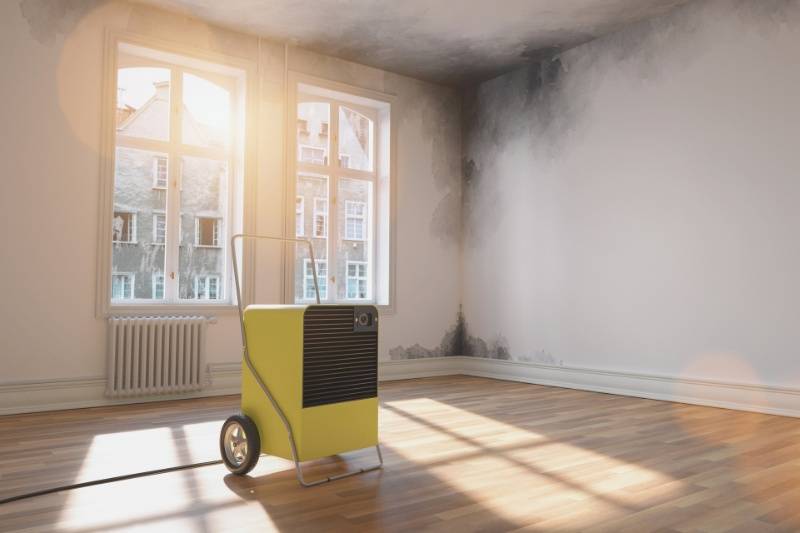
Frequently Asked Questions (FAQ)
Here are answers to some common questions about using hydrogen peroxide to kill mold:
Hydrogen peroxide typically takes about 10 minutes to kill mold after application. You should allow it to sit on the surface for at least this duration before scrubbing for effective mold removal.
Both vinegar and hydrogen peroxide are effective mold killers. Vinegar is effective against a wider range of mold species (about 82%) and prevents regrowth, while hydrogen peroxide is a strong oxidizer effective on surface mold. The "better" choice often depends on the surface and specific situation. Never mix them as it creates toxic fumes.
For black mold on non-porous surfaces, you can spray a 3% hydrogen peroxide solution, undiluted white vinegar, or a solution of tea tree oil. For extensive black mold, especially on porous materials or if you suspect it's toxic, professional mold remediation is highly recommended due to potential health risks.
Hydrogen peroxide kills black mold by releasing oxygen, which oxidizes and breaks down the mold's cellular structure. This process helps to kill the mold spores and often lifts stains from non-porous surfaces, making it an effective anti-mold solution.
